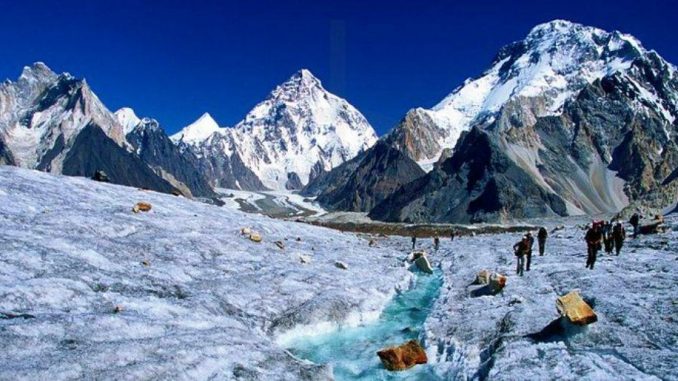
In News
- A scientific study using the cold war-era spy satellite images has found that the Himalayan glaciers have lost a quarter of its ice since 1975.
In-Detail
- The study conducted using the spy satellite images captured during the cold war and compared them with the images from the modern stereo satellites.
- It was found that the glacial melting on the Himalayas is occurring twice as fast as average temperatures rose after the beginning of the century.
- At the height of the cold war, the US had deployed several spy satellites for reconnaissance purpose that orbited the earth and captured numerous images using telescopic camera system.
- Using the images from these satellites scientists are now showing the devastating effects of global warming on the Himalayas.
- Scientists have used the overlapping images of an area of 30,000 sq meters with a resolution of 6 to 9 meters and have developed a digital elevation model of the Himalayas.
- Four decades of ice loss in 650 largest glaciers across a transect of 2000 km on the Himalayas has been studied.
The Observations
- Of the toll ice mass measured in 1975, 87% remained in 2000 and 72% remained in 2016.
- Similar ice loss rates have been found across subregions and doubling of the average ice loss rates during 2000-2016 relative to 1975-2000 interval.
- The study asserts that rising temperature is the reason for the increased ice loss rates while categorically ruling out the deposition of soot and changing precipitation patterns for ice loss.
- The numbers are consistent with the multi-decade weather station records of the High Mountain Asia (HMA – which includes all mountain ranges surrounding the Tibetan Plateau).
Importance of Himalayan Glaciers
Millions of people in India, Pakistan, and Bangladesh are dependent on the waters from the rivers that have their source in the Himalayan glaciers. With the accelerated ice loss, floods may occur. People, crops, and livestock will be under threat. There will come a time when these rivers will have less water and drought conditions will prevail in the once productive region.
The Himalayan glaciers are fed by the monsoon precipitation. It was thought that the varying monsoonal patterns are the reason for glacier loss. But the study clearly shows that it is the rising temperatures due to global warming the reason behind melting glaciers.
The only way the Indian government can tackle the issues is to take the leadership position at the world stage and follow the Paris Climate Agreement targets diligently and make other countries to do the same. Only then there is a chance that climate change, the great crisis the humanity is facing may abate.

Leave a Reply
You must be logged in to post a comment.